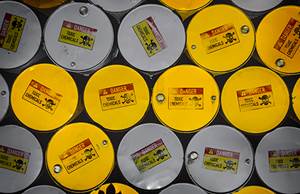How Clean Is Clean?
With so many OEMs, especially automotive, offering extended warranties to win business, Dürr Ecoclean and other parts cleaning manufacturers face tighter component cleanliness specifications every day.
With so many OEMs, especially automotive, offering extended warranties to win business, Dürr Ecoclean and other parts cleaning manufacturers face tighter component cleanliness specifications every day. Unfortunately, some Tier One and Tier Two suppliers do not fully understand cleanliness by today’s standards, so they accept contracts without fully appreciating what is required to achieve the cleanliness requirements.
There are exceptions, of course. Manufacturers of components for gas and diesel fuel injection systems or transmission control bodies know what a micron particle size is, what a milligram of particle weight is and the effects these have on their components. However, few Tier One or Tier Two manufacturers realize that particles the size of table salt (100 microns) are considered extremely large by today’s standards, and targets are occasionally as small as one particle of talcum powder (10 microns). In simple terms, it is easy to see fog, but imagine trying to see one drop of fog (50 microns), or one white blood cell (25 microns), especially when your visibility limit is approximately 40 microns.
Therefore, achieving true cleanliness takes a calculated process that includes sufficient exposure time, proper cleaning solutions, proper filtration and in some cases, demagnetized steel parts. An air-filtered, clean room keeps contamination from blowing back onto the part after it is removed from the cleaning/drying process. I have witnessed the correct machine for a requirement fail the cleanliness tests because it was located near the facility truck well, with ten to 15 diesel-fired engines going in and out each day. What would happen if outside, Farmer Brown is plowing his field with the wind coming out of the northwest, directly through the plant door?
Machining oils, oil additives and coolants are contaminates, of course, along with metallic chips and fines. Even aqueous cleaning solutions contain contaminates, which are added to the water by Mother Nature: We call them minerals, salt and calcium. Unfortunately, if these items are in cleaning fluids, then components are re-contaminated every time. The longer parts are transported through the spray or dunk system, the more contaminated that cleaning fluid becomes from the machining fluids and chips. Although with proper filtration, the cleaning fluid life can be prolonged, eventually waste disposal experts must be called.
Another potential source of contaminates is the washer’s drying system. Often, the large recirculation fans get their air from the facility they are in via intakes with thin filters, which are similar to home furnace filters. Think about the loading docks and Farmer Brown again—the drying fan intakes dirt particles and bombards them directly back on the parts. The watery solution being carried over from the wash and rinse process is atomized by the blast of air, displacing the cleaning chemicals, minerals and whatever else also has been ingested into the drying system and sprayed directly on the parts. Again, filtration can help, but pulling air through a tight weave filter is not as easy as it sounds.
A new cleaning process introduced to the United States several years ago by Dürr Ecoclean addresses these cleaning and drying problems, using environmentally friendly hydrocarbon cleaning fluids. The parts are cleaned and dried in a single work chamber in a bulk load configuration, either randomly in a basket or held in locking fixtures. Pressure in the work chamber is reduced via a vacuum pump, removing all air and allowing the cleaning fluid to flow into blind, tapped holes and cavities. This is where air bubbles are formed in an aqueous process, but they don’t form in a vacuum.
Rotation and/or oscillation is recommended during the cleaning and vacuum drying process to help remove contaminates and cleaning fluids from the parts. Ultrasonic power is required for deep cleaning in pores and on surface areas that hold small particles found in lapping and polishing operations. Bag and cartridge filters are used to clean up the majority of the solid contaminates, and contaminated fluids are pumped into a distillation system where the oils are brought to a boil to separate the machining oil from the hydrocarbon cleaning fluid. Some of the vaporized hydrocarbon cleaning fluid is condensed and returned to the system as a pure fluid, and the balance of the vapors are used for the cleanest rinse that parts will ever see. After the degreasing step, the vacuum drying process begins and the remaining cleaning fluid on the parts is vaporized, condensed and returned to the distillation system for reprocessing.
Not understanding cleanliness can cost a manufacturer the project or the margin. Any reputable cleaning company, though, will do everything possible to help manufacturers meet customer requirements.
Related Content
Sita’s CleanoSpector Measures Part Cleanliness
PMTS 2023: Handheld measuring device checks for cleanliness of parts to assure product quality as well as prior to follow-up processes.
Read MoreEnvironmentally Friendly Model 550 Versatile Parts Washer
PMTS 2023: This washer is useful in a variety of applications, including tool rooms, maintenance operations, low production and precision cleaning.
Read MoreVersatile Sandblasting for Deburring Intricate Geometries
PMTS 2023: Comco’s MicroBlasting sandblasting systems can deburr, texture and clean small, intricate parts.
Read MoreParts Cleaning Sector Shifts Energy Toward Regulatory Changes
With changes in EPA regulations regarding the use of some popular cleaning fluids, cleaning suppliers and end users are readjusting business strategies and/or cleaning processes to meet new requirements.
Read MoreRead Next
A Tooling Workshop Worth a Visit
Marubeni Citizen-Cincom’s tooling and accessory workshop offers a chance to learn more about ancillary devices that can boost machining efficiency and capability.
Read More5 Aspects of PMTS I Appreciate
The three-day edition of the 2025 Precision Machining Technology Show kicks off at the start of April. I’ll be there, and here are some reasons why.
Read MoreDo You Have Single Points of Failure?
Plans need to be in place before a catastrophic event occurs.
Read More






















